Where To Install Split Ac In Bedroom
VMware vSphere 6.5 and 6.7 reaches end of general support 15 October 2022, both referenced in the VMware Lifecycle Matrix. See also How to Install vSphere 7.0. Upgrade to vSphere 7 can be achieved directly from vSphere 6.5.0 and above, for more information see the VMware Upgrade Matrix. Finally, the Windows vCenter Server and external PSC deployment models are now depreciated and not available with vSphere 7.0.
VMware vCenter Server pools ESXi host resources to provide a rich feature set delivering high availability and fault tolerance to virtual machines. The vCenter Server is a centralised management application and can be deployed as a virtual appliance or Windows machine. It should be noted that vCenter 6.7 is the final release where Windows modules will be available, see here for more information. All future releases will only be available as vCenter Server Appliance (VCSA) which is the preferred deployment method of vCenter Server. An existing Windows vCenter can be migrated to VCSA by following the steps in Migrating Windows vCenter Server to VCSA 6.7 This post gives a walk through on a clean installation of VCSA 6.7.
vCenter 6.7: Download | Release Notes | What's New | VMware Docs | vSphere Central

About VCSA

The VCSA is a pre-configured virtual appliance built on Project Photon OS. Since the OS has been developed by VMware it benefits from enhanced performance and boot times over the previous Linux based appliance. Furthermore the embedded vPostgres database means VMware have full control of the software stack, resulting in significant optimisation for vSphere environments and quicker release of security patches and bug fixes. The VCSA scales up to 2000 hosts and 35,000 virtual machines. A couple of releases ago the VCSA reached feature parity with its Windows counterpart, and is now the preferred deployment method for vCenter Server. Features such as Update Manager are bundled into the VCSA, as well as file based backup and restore, and vCenter High Availability. The appliance also saves operating system license costs and is quicker and easier to deploy and patch.
Software Considerations
- VCSA 6.7 must be deployed to an ESXi host or vCenter running v5.5 or above. However, all hosts you intend to connect to vCenter Server 6.7 should be running ESXi 6.0 or above, hosts running 5.5 and earlier cannot be managed by vCenter 6.7 and do not have a direct upgrade path to 6.7.
- You must check compatibility of any third party products and plugins that might be used for backups, anti-virus, monitoring, etc. as these may need upgrading for vSphere 6.7 compatibility.
- To check version compatibility with other VMware products see the Product Interoperability Matrix.
- The points above are especially important since at the time of writing vSphere 6.7 is new enough that other VMware and third party products may not have released compatible versions. Verify before installing vSphere 6.7 and review the Release Notes and Important information before upgrading to vSphere 6.7 KB.
Architectural Considerations
- When implementing a new vSphere 6.7 environment you should plan your topology in accordance with the VMware vCenter Server and Platform Services Controller Deployment Types.
- A series of videos covering vCenter Server and Platform Services Architecture can be found here. If you require further assistance with vCenter planning see also the vSphere Topology and Upgrade Planning Tool here,
- Most deployments will include the vCenter Server and PSC in one appliance, following the embedded deployment model, which I will use in this guide.
- Greenfield deployments of vSphere 6.7 can take advantage of Embedded PSC with Enhanced Linked Mode, providing native vCenter Server HA support, and removal of SSO site boundaries.
- Consider if the default self-signed certificates are sufficient or if you want to replace with custom CA or VMware CA signed certs, see Installing vCenter Internal CA signed SSL Certificates for more information.

Other Considerations
- The VCSA with embedded PSC requires the following hardware resources (disk can be thin provisioned)
- Tiny (up to 10 hosts, 100 VMs) – 2 CPUs, 10 GB RAM.
- Small (up to 100 hosts, 1000 VMs) – 4 CPUs, 16 GB RAM.
- Medium (up to 400 hosts, 4000 VMs) – 8 CPUs, 24 GB RAM.
- Large (up to 1000 hosts, 10,000 VMs) – 16 CPUs, 32 GB RAM.
- X-Large (up to 2000 hosts, 35,000 VMs) – 24 CPUs, 48 GB RAM – new to v6.5.
- Storage requirements for the smallest environments start at 250 GB and increase depending on your specific database requirements. See the Storage Requirements document for further details.
- Where the PSC is deployed as a separate appliance this requires 2 CPUs, 4 GB RAM, 60 GB disk.
- Environments with ESXi host(s) with more than 512 LUNs and 2048 paths should be sized large or x-large.
- The ESXi host on which you deploy the VCSA should not be in lockdown or maintenance mode.
- All vSphere components should be configured to use an NTP server. The installation can fail or the vCenter Server Appliance vpxd service may not be able to start if the clocks are unsynchronized.
- FQDN resolution should be in place when deploying vCenter Server.
- A list of Required Ports for vCenter Server and PSC can be found here.
- The configuration maximums for vSphere 6.7 can be found here.
- In vSphere 6.7 TLS 1.2 is enabled by default. TLS 1.0 and TLS 1.1 are disabled by default, review the Release Notes for more information.
- There are a number of Intel and AMD CPUs no longer supported with vSphere 6.7, review the Release Notes for a full list of unsupported processors.
Installation
Download the VMware vCenter Server Appliance 6.7 ISO from VMware downloads: v6.7.0.
Mount the ISO on your computer. The VCSA 6.7 installer is compatible with Mac, Linux, and Windows. Browse to the corresponding directory for your operating system, e.g. \vcsa-ui-installer\win32. Right click Installer and select Run as administrator. As we are installing a new instance click Install.

The installation is split into 2 stages, we begin with deploying the appliance. Click Next.
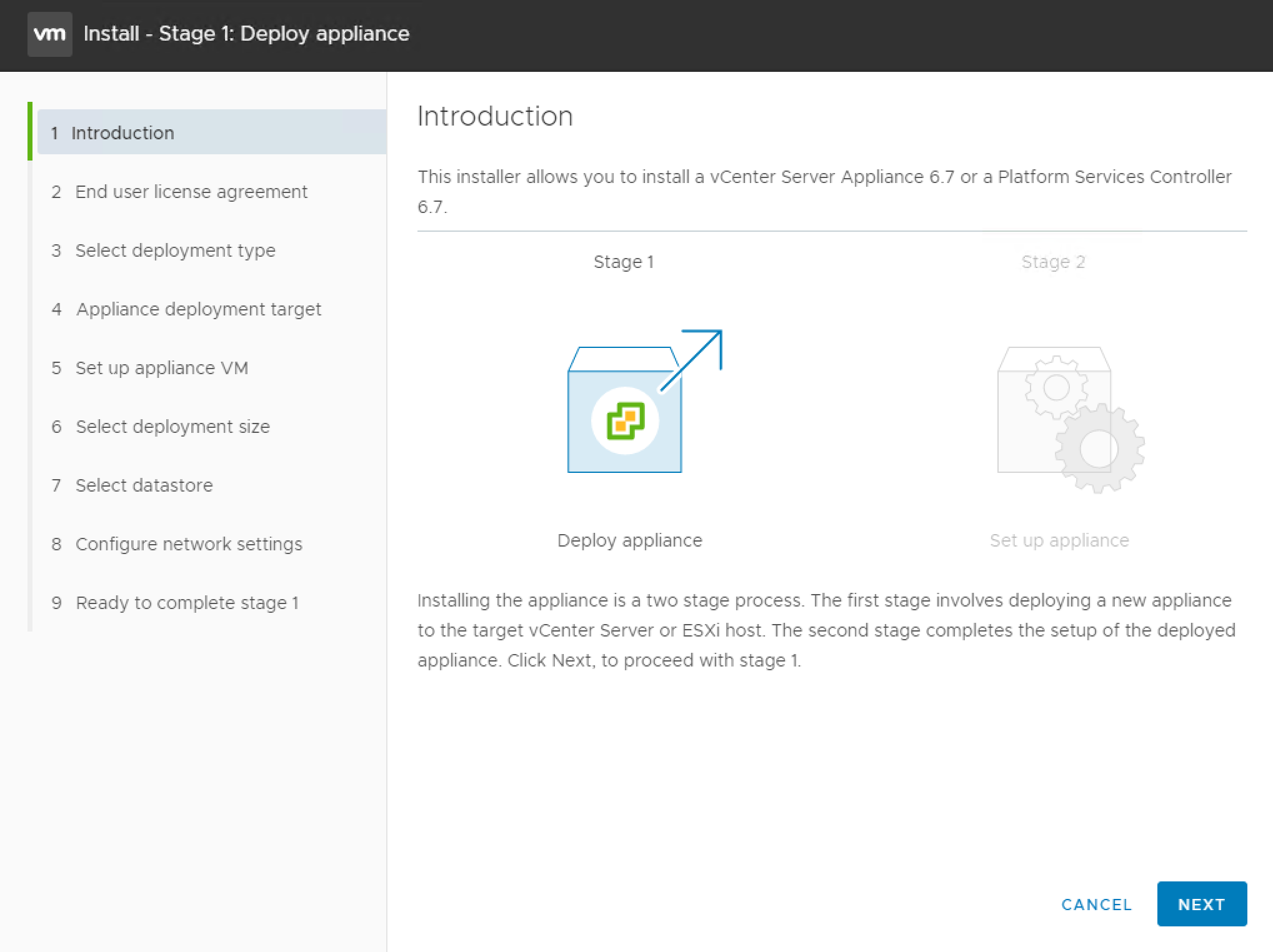
Accept the license agreement and click Next.

Select the deployment model, in this example we will be using an embedded deployment combining the vCenter Server and Platform Services Controller in one appliance, click Next.

Enter the FQDN or IP address of the host, or vCenter upon which you wish to deploy the new VCSA. Enter the credentials of an administrative or root user and click Next. The installer will validate access, if prompted with an untrusted SSL certificate message click Yes to continue. Tip – connect to the vCenter for visibility of any networks using a distributed switch, connecting to the host direct will only pull back networks using a standard switch.

Enter the VM name for the VCSA and a root password, click Next.

Select the deployment size in line with the number of hosts and virtual machines that will be managed, click Next.
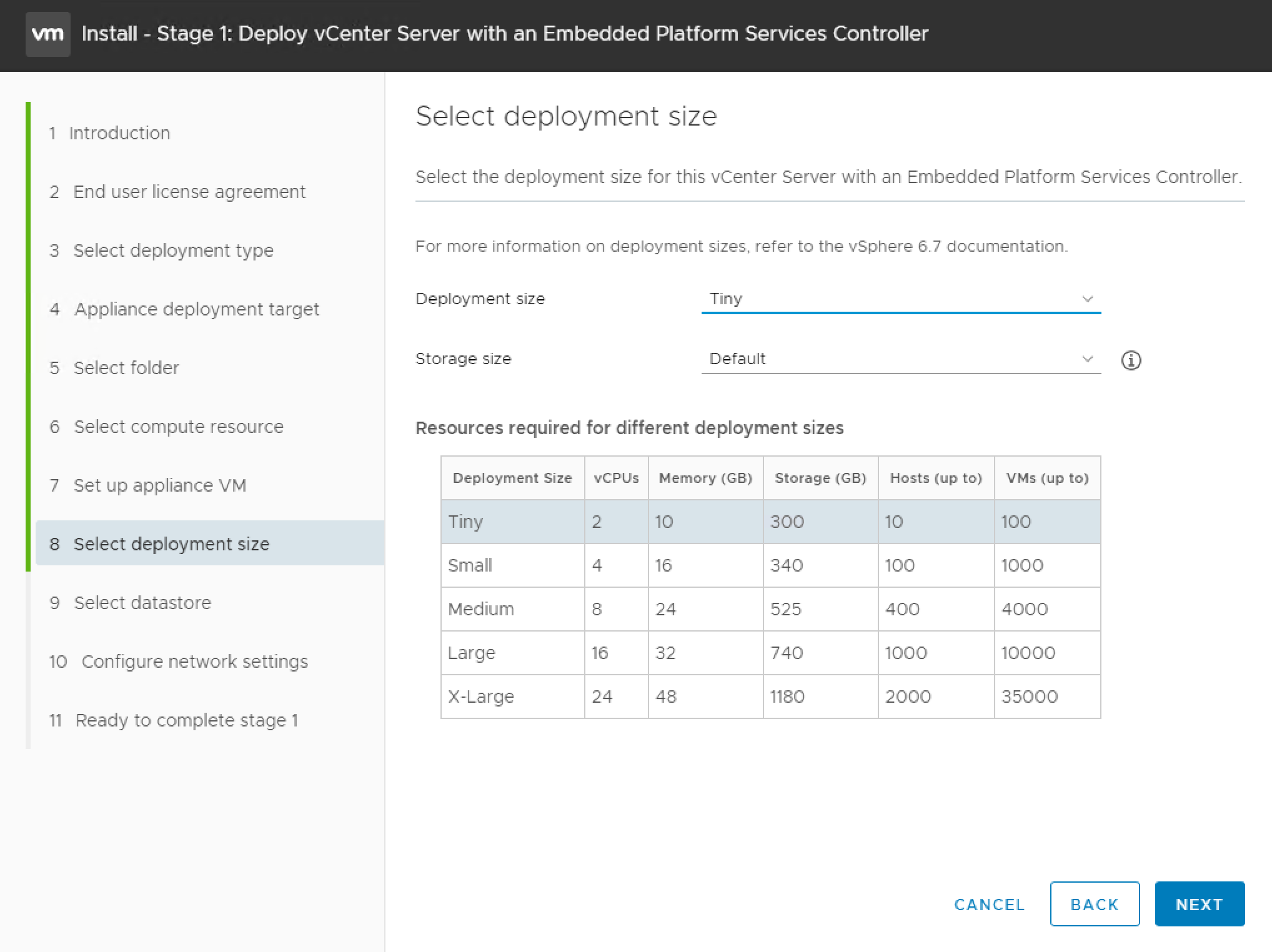
Select the datastore where the VCSA will be deployed, select thin provisioning if required, and click Next. Configure the network settings for the appliance and click Next.

On the summary page click Finish. The appliance will now be deployed.
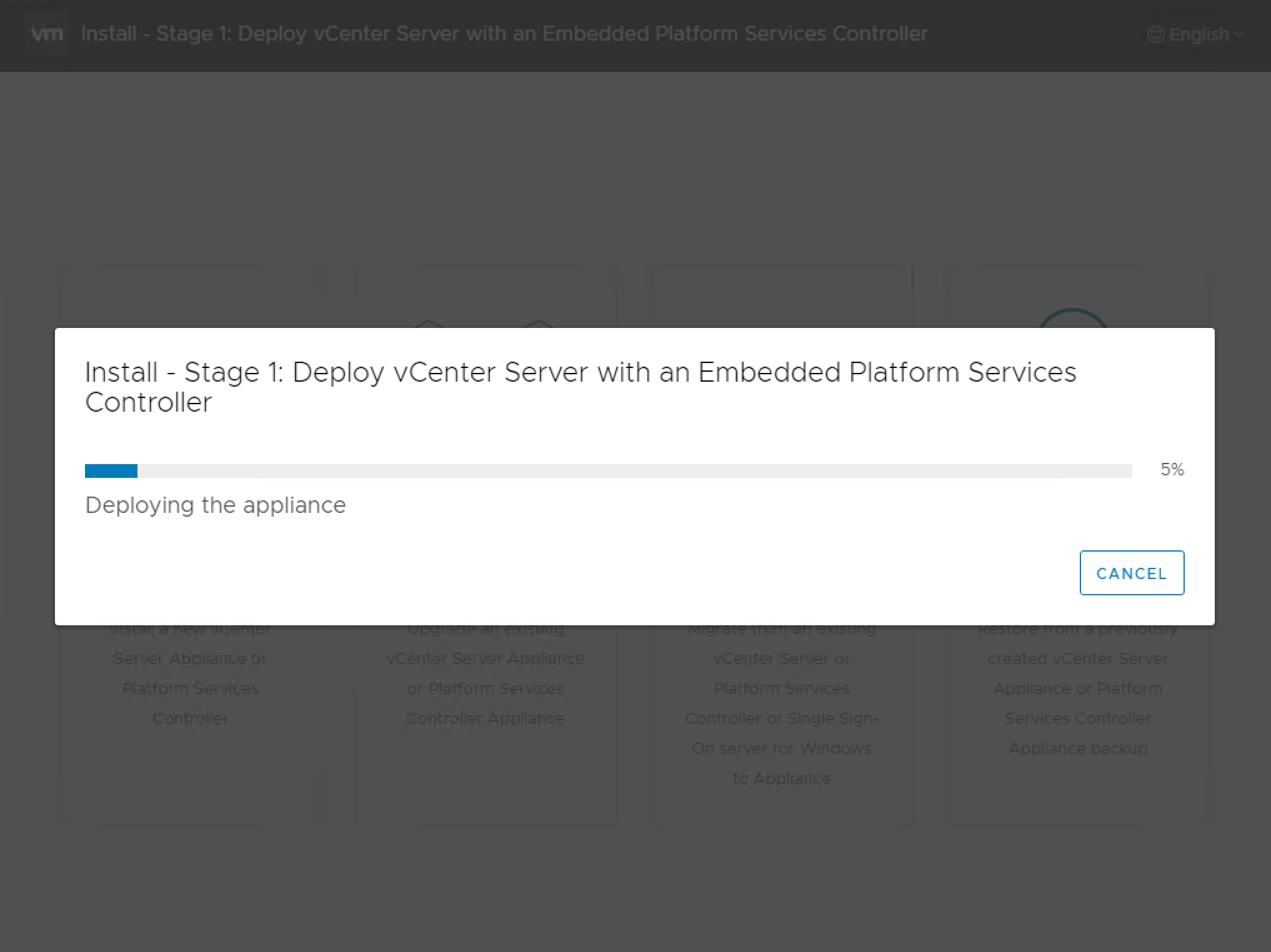
With the VCSA now deployed we can move on to stage 2, click Continue.

Click Next to being the VCSA setup.

Configure the NTP servers, enable SSH access if required, and click Next.

Enter a unique SSO domain name, the default is vsphere.local. The SSO domain name should not be the same as your Active Directory Domain. Configure a password for the SSO administrator, click Next.
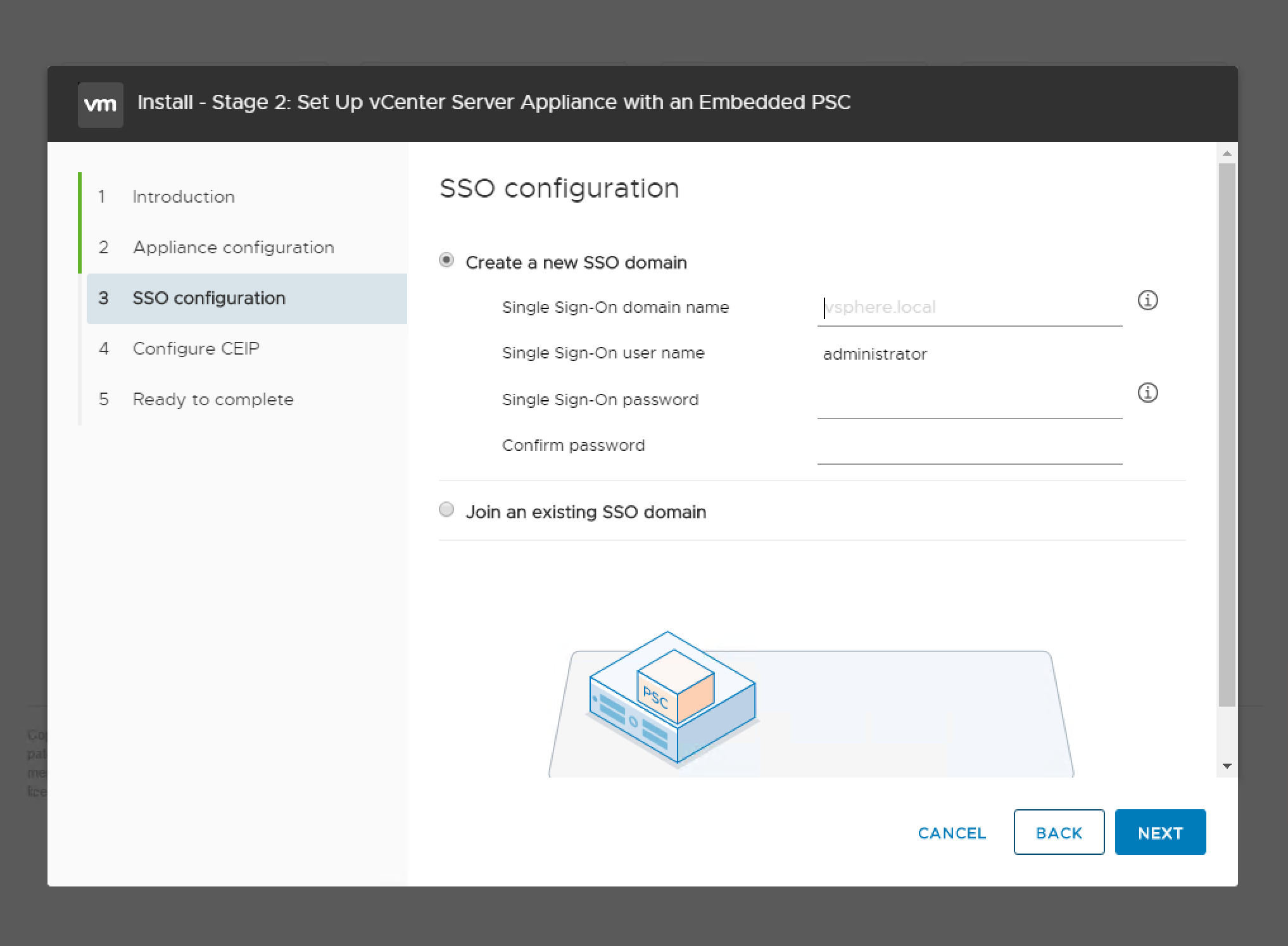
Select or deselect the customer experience improvement program box and click Next.

Review the details on the summary page and click Finish. Click Ok to acknowledge that the VCSA setup cannot be paused or stopped once started. When the installer is complete click Close to close the wizard.
Post-Installation
Connect to the vCenter post install using the IP or FQDN of the vCenter. Access vSphere by clicking eitherLaunch vSphere Client (HTML5) orLaunch vSphere Web Client (FLEX). As the web client will be depreciated in future versions, and the HTML5 client is now nearly at full feature parity, we will use the HTML5 vSphere client.
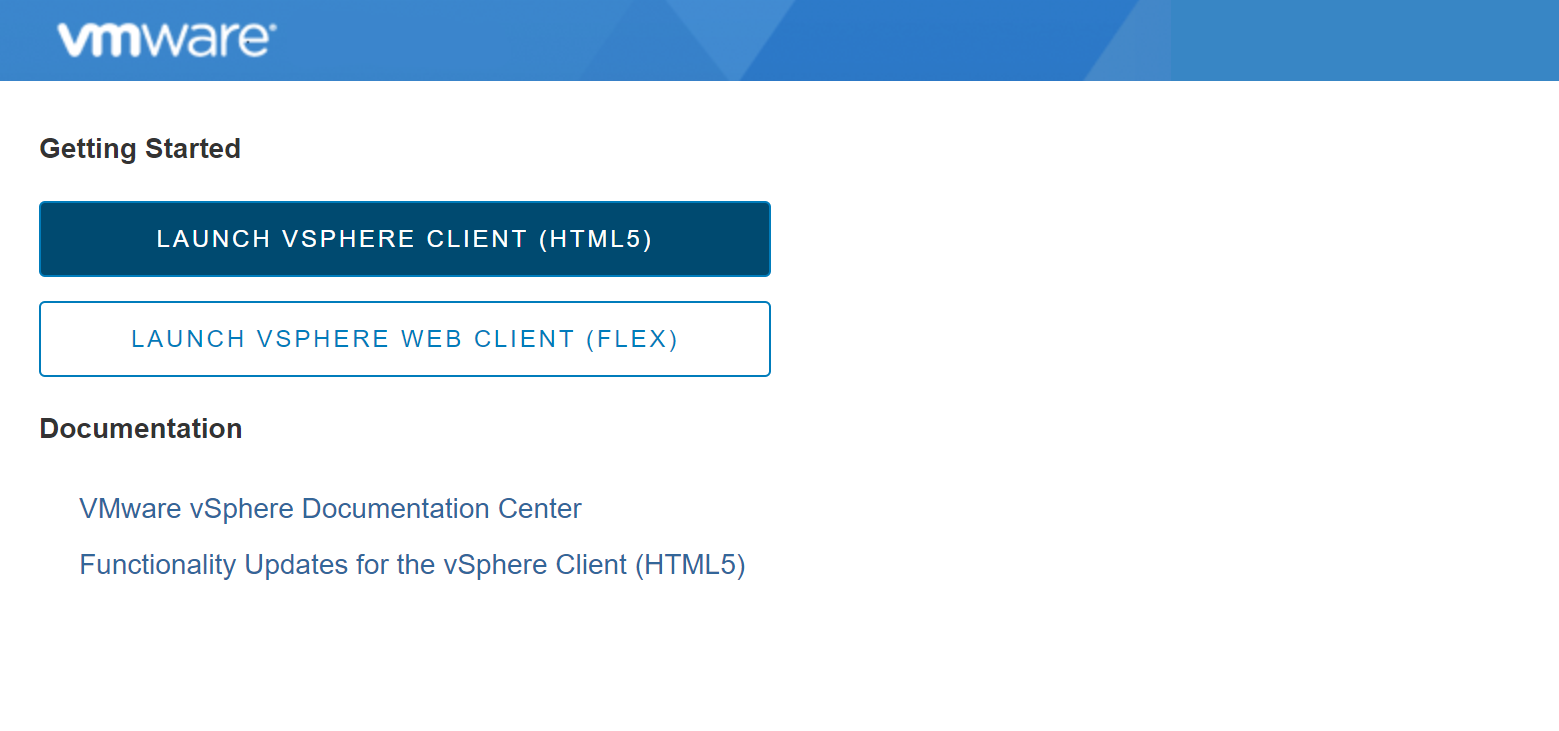
You must apply a new vCenter license key within 60 days. If you have purchased vCenter Server then log into your licensing portal here. If the license key does not appear then check with your VMware account manager. Log in to the vSphere Web Client using the SSO administrator login. From the Menu drop-down click Administration,
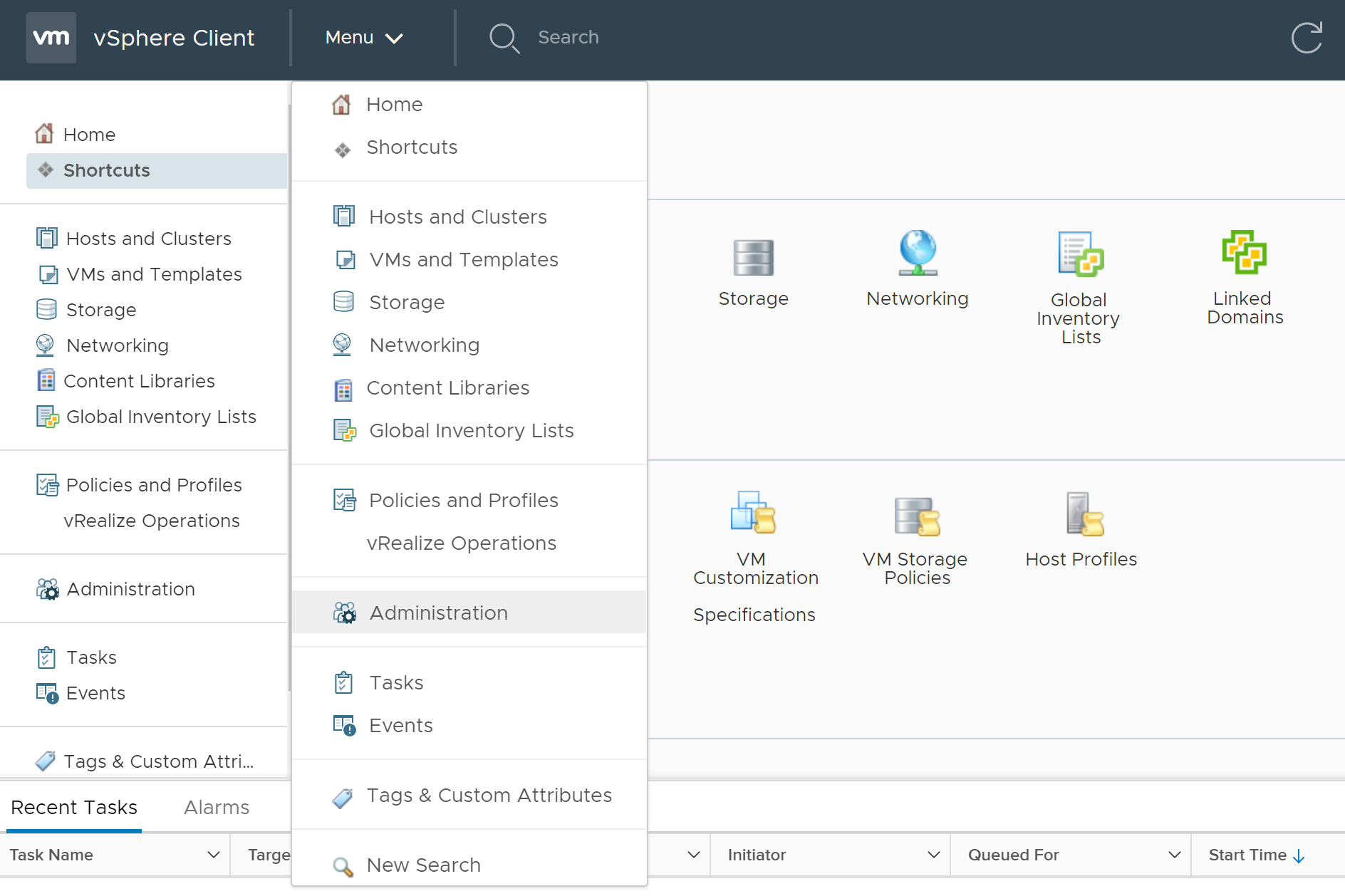
Under Licensing select Licenses. First we need to add a new license key, click Add New Licenses. Enter the new license key for vCenter Server, click Next. If applicable assign a name to the licence, click Next. Click Finish to add the license key.
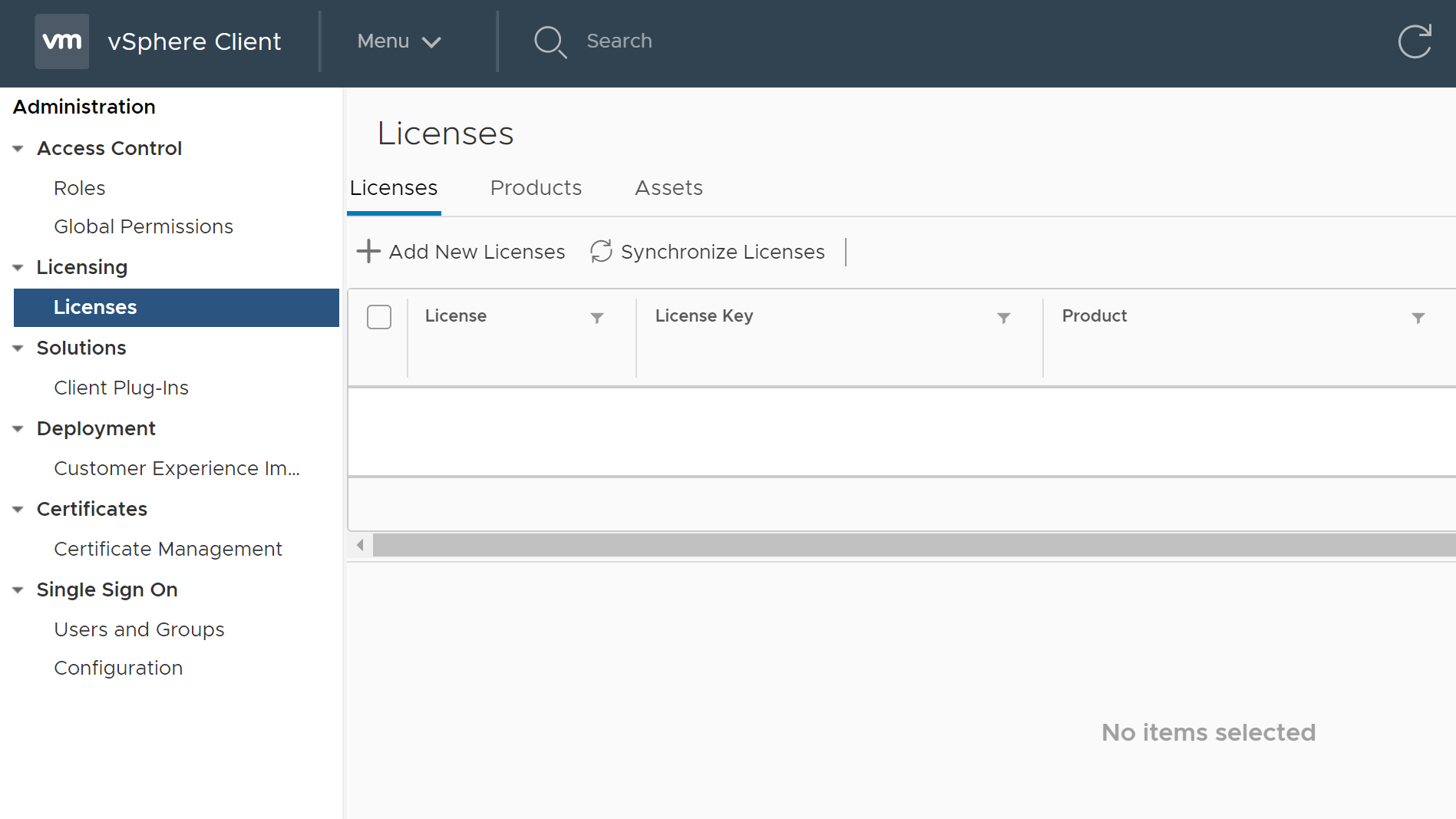
Switch to Assets, the vCenter Server is listed in evaluation mode. Highlight the vCenter and click Assign License. Select the license key and click Ok.
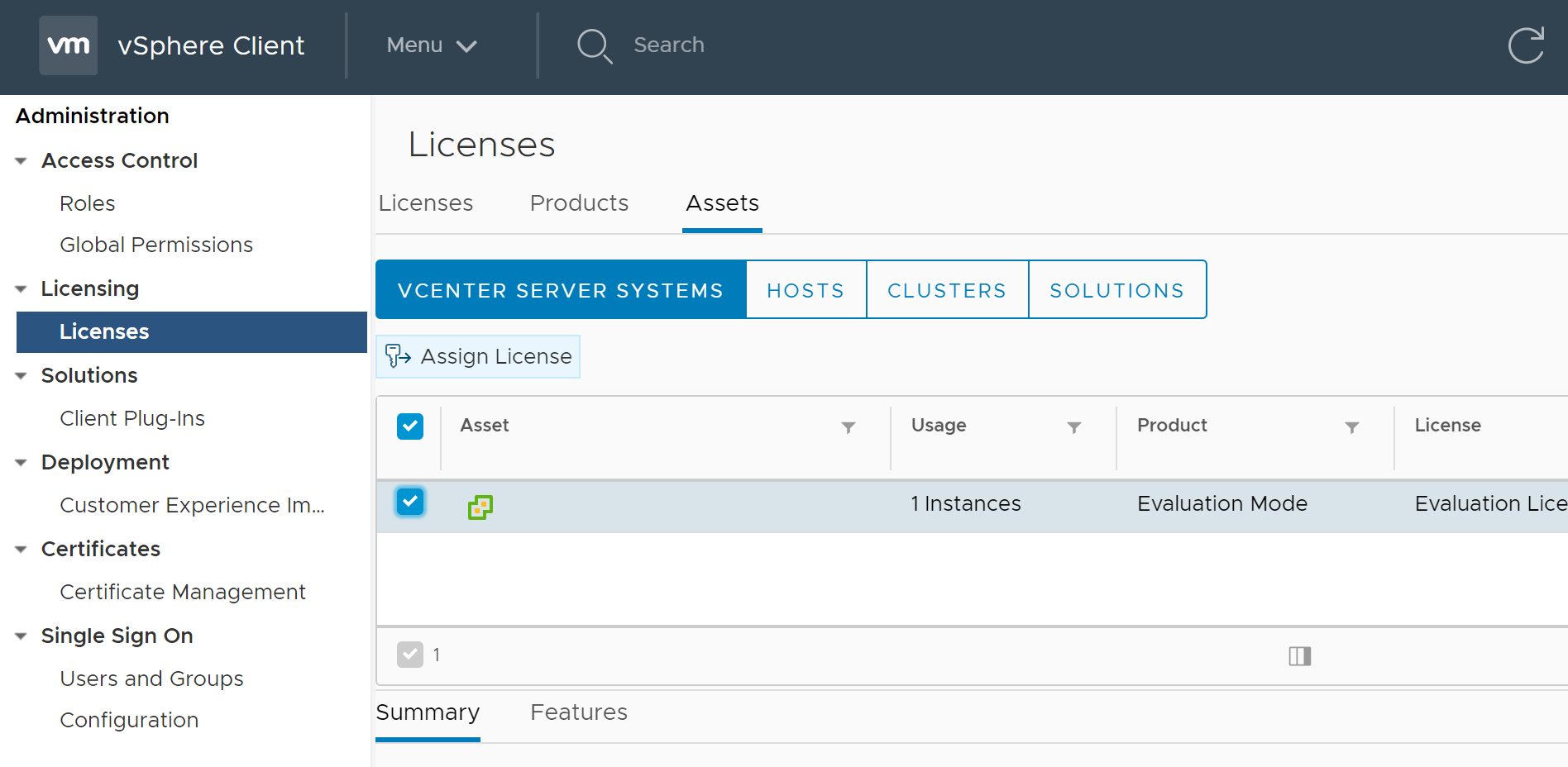
If you have an Active Directory domain then vCenter can use this as an identity source. First ensure the vCenter is joined to the domain; from the Menu drop-down click Administration. Under Single Sign On clickConfiguration. Select the Active Directory Domain tab and verify the vCenter is domain joined. Change to the Identity Sources tab and click Add Identity Source. Fill in the Active Directory details for your domain and click Ok.

You can now add permissions to vCenter objects such as datacenters, clusters, folders, individual virtual machines, etc. for Active Directory users and groups. To learn more about vSphere permissions click here.
To start adding ESXi hosts to vCenter click the Menu drop-down and select Hosts and Clusters. Right click the vCenter and select New Datacenter, give the datacenter a name and click Ok. Right click the datacenter and select Add Host. Follow the onscreen wizard to add a host. Creating clusters and configuring vCenter is beyond the scope of this post, for assistance follow the documentation links at the top of the page.
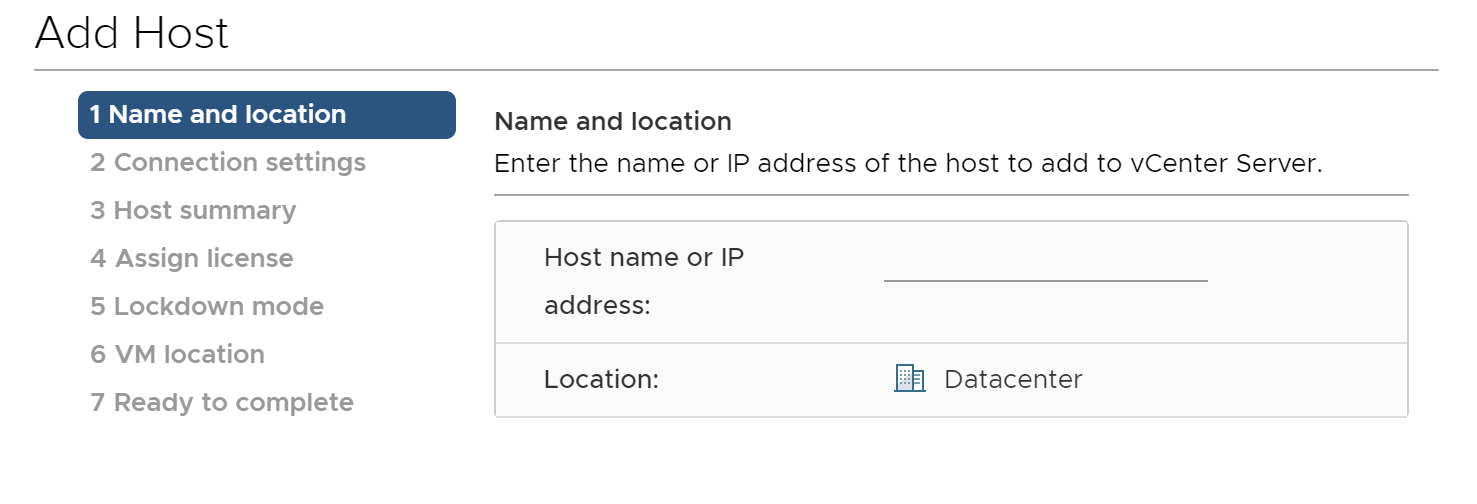
Where To Install Split Ac In Bedroom
Source: https://esxsi.com/2018/04/25/vcsa67/
